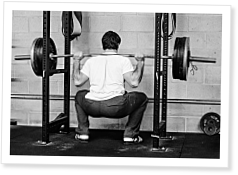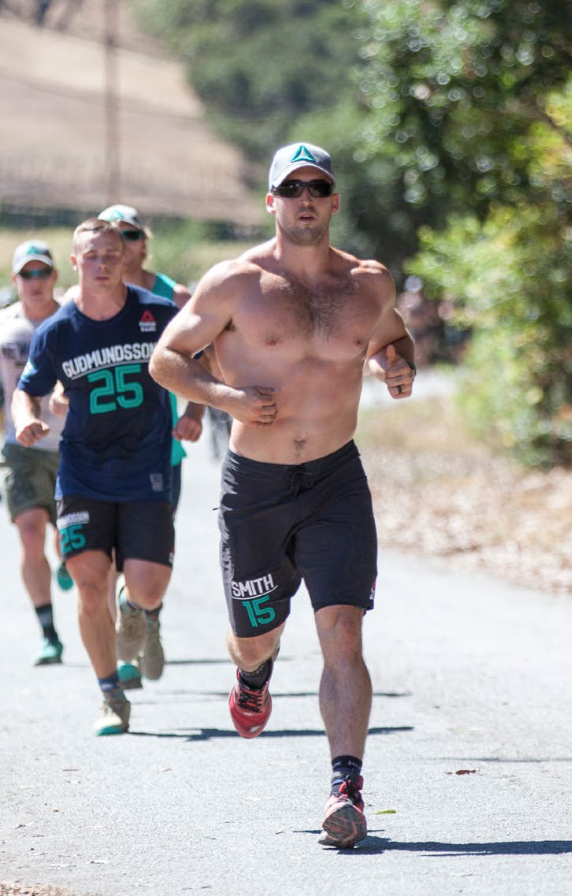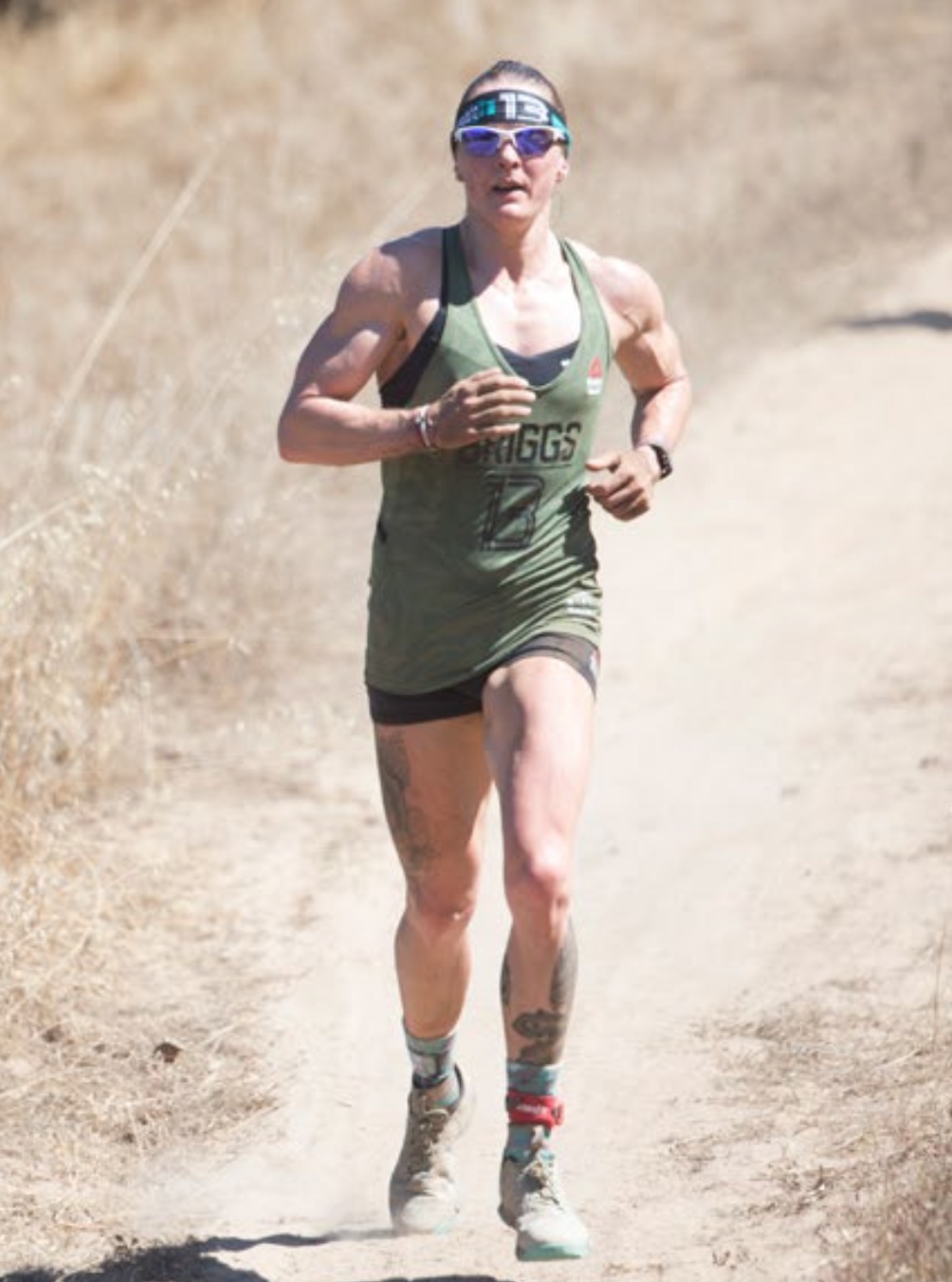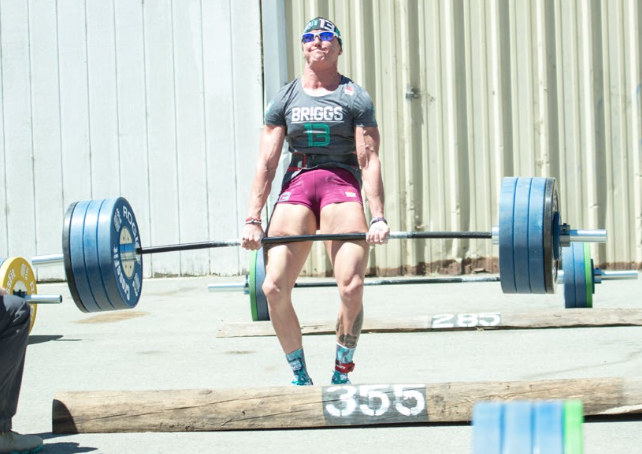
Nice deadlift. What’s your Helen time?
We’re well aware of your snatch PR.
We can indeed hear you grunting as you rep out.
We know you hold the top spot on the squat leaderboard.
And yes, we know all about your big bag of supplements, your special gear, your amp-up music and your pre-lift routine.
But a great many of us really don’t care about your strength numbers.
Here’s why: You’re in a CrossFit program.
This, of course, is not to throw shade at those who are specifically training for powerlifting, weightlifting or strongman. You guys and girls are cool. We’re thrilled to watch you clean and press our deadlift PR. We’ll gladly lend our car if you need something to pull around the block. Have at that 700-lb. yoke with our complete blessing. We respect you and your goals.
We’re also down with strong guys and girls who bust their asses all week in workouts that include heavy barbell work, long runs, gymnastics and everything in between. You guys are A-OK.
The people who need a reminder are the Big Dogs—those who are part of a CrossFit program yet clearly dodge every conditioning workout, taking pride only in their lifting numbers.
Lest you miss the point, let it be stated again: There is nothing wrong with a love of lifting. Training specifically to lift heavy is fantastic. Regularly lifting heavy is also part of a well-rounded CrossFit program. Lifting to target and eliminate a weakness is fine as well. However, exclusively lifting heavy to the detriment of other aspects of fitness is ridiculous if you claim to do CrossFit. CrossFit is not just showing up to max out on heavy days.
 Ben Smith’s lifting numbers are impressive, but they’re even more impressive when placed next to his scores on conditioning workouts.
Ben Smith’s lifting numbers are impressive, but they’re even more impressive when placed next to his scores on conditioning workouts.
If you only want to lift and begrudge anyone who suggests true fitness includes stamina, endurance, flexibility, conditioning and so on, you stick out like a chalk-free barbell at a CrossFit gym. We suspect you want to stick out because you believe it’s important that many other people know how much you can lift.
If it wasn’t, you’d probably be in the basement benching alone to the “Rocky IV” soundtrack.
Big Dogs generally lack self-awareness, so if you’re unsure if you’re a member of the pack, please review this list of telltale behaviors:
• Writing strength numbers on the whiteboard in larger print or in a color that stands out.
• Speaking overly loudly about recent strength PRs.
• Scaling loads up to turn met-cons into strength work.
• Justifying brutally slow met-con times by saying “but I scaled up.”
• Having a work schedule that somehow always prevents attendance on conditioning days.
• Commenting on other people’s PR videos with thunder-stealing nonsense such as, “Finally joined the 400 club, hey?”
• Grunting and over-the-top PR celebration.
• Stating “I’ve done way more before” after any submaximal lift.
• Asking other members what they lifted only so they’ll ask in return.
• Justifying poor results by mentioning soreness from an “epic squat sesh” earlier in the week.
• Claiming the most prominent squat rack so people can see what’s on the bar.
 Top CrossFit athletes have proven that it’s possible to earn a 300-lb. snatch, a 500-lb. squat and a 20-minute 5-kilometer time.
Top CrossFit athletes have proven that it’s possible to earn a 300-lb. snatch, a 500-lb. squat and a 20-minute 5-kilometer time.
About six or seven years ago, Big Dogs were slightly more accepted in CrossFit programs. Your strength and power were indeed impressive, so some looked past an overall lack of fitness in what might be considered the early-middle part of the CrossFit revolution—a time when many athletes were only beginning to scratch the surface of what’s possible.
Then something interesting happened: Athletes proved that you can get really, really strong while still improving all the other aspects of fitness.
CrossFit Founder and CEO Greg Glassman always said this would happen, but you scoffed at the thought and instead took pride in your place at the top of the deadlift leaderboard, which interestingly corresponded with your absence from the Helen leaderboard.
It took a bit of time for things to sort themselves out, but guys like Ben Smith have utterly ruined it for you. Smith’s slightly outdated CrossFit Games profile lists impressive strength numbers: 480-lb. back squat (he’s hit 500), 540-lb. deadlift, 300-lb. snatch and 335-lb. clean and jerk (he’s lifted 370).
But Smith, the Fittest Man on Earth in 2015, can also run 5 kilometers in 20:20. He can do Helen in 7:19. He’s scored 520 on Fight Gone Bad. He’s done Filty Fifty in 16:17.
Smith’s just one example. Look to the stats of just about any Games or regional-level competitor—male or female—and you’ll find an astounding blend of strength and, yes, conditioning. Fitness, in other words.
 Sam Briggs, a former CrossFit Games champion, has a world-class engine in addition to significant lifting numbers.
Sam Briggs, a former CrossFit Games champion, has a world-class engine in addition to significant lifting numbers.
It’s clear that Smith’s numbers are not the sort of thing that would put him at the top of the podium at a weightlifting or powerlifting meet contested by highly trained specialists, but they’re damn good for an athlete who trains for general physical preparedness, and they’re more than enough to take the Big Dogs out of the conversation in a CrossFit box.
This is terrible news for you, as your prized strength numbers are now often equaled or significantly bettered by athletes whose fitness allows them to be good at every single CrossFit workout from one-rep-max deadlift to Murph. Every Big Dog has his or her day, so you might beat these athletes in one or two strength workouts, but they’ll smoke you in the next nine—if you show up, of course.
You’re quickly becoming a rarity. The strong guy/girl is being replaced by the strong athlete who can run, row and bang out muscle-ups, too.
You really need to make a simple choice: train like a lifter or train like a CrossFit athlete. Either option is totally fine. If you select the former, expect us to cheer you on as you bend the bar. Bending the bar is very cool.
“It is not a character flaw. There is no value judgment. Rather, you are not advancing your fitness. Instead, you are advancing a very narrow bandwidth of a specialized capacity,” as stated in the “CrossFit Level 1 Training Guide.”
Usain Bolt has done exactly that, and no one should criticize him. Specialization isn’t bad. Specialization is what allows people to break world records. But specialization also 100 percent ensures that certain elements of fitness will be neglected on purpose.
 If you do CrossFit, why covet a big deadlift or a great Cindy score? Why not earn both?
If you do CrossFit, why covet a big deadlift or a great Cindy score? Why not earn both?
So if you choose to stick with this CrossFit thing, keep in mind that we’re all chasing the kind of well-rounded fitness that allows us to be good at any physical task.
That doesn’t mean you need to give up your love of lifting, and you don’t have to hide your ear-to-ear grin on deadlift day. We want to see you load up the plates and pull, and we’ll be cheering as you notch a new PR. But you do need to start showing up to conditioning and gymnastics workouts and putting in some effort. Stop ducking the 5-kilometer run or trying to do Cindy with 225-lb. squats that hide your inability to do pull-ups quickly. Quit benching after class and do some rowing intervals instead.
Read “What Is Fitness?” and realize strength and power are but two of the 10 attributes we’re training. Buy into the program.
If you’re really into overall fitness, feel free to join us for a sweet 5 by 5 of heavy back squats.
But we’re doing a 400-meter run after each set, and the workout is scored by time to completion.
About the Author: Mike Warkentin is the managing editor of the CrossFit Journal and the founder of CrossFit 204.
Photo credits (in order): Chris Nolan/CrossFit Journal, Naveen Hattis/CrossFit Journal, Dave Re/CrossFit Journal, Ruby Wolff/CrossFit Journal.
No comments:
Post a Comment